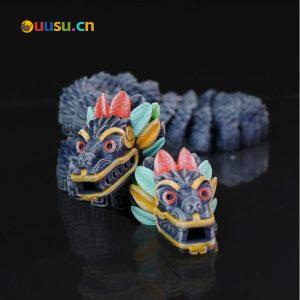
Vue.js是一款流行的JavaScript框架,它能帮助开发者构建交互性强和高性能的Web应用。在开发中,国际化和多语言支持是一个不可忽视的问题,特别是在面向全球市场的项目中。本文将通过分享Vue开发中的经验,总结解决多语言和国际化问题的实践,帮助开发者更好地应对这一挑战。
- 使用Vue I18n进行多语言切换
Vue I18n是Vue.js官方推荐的国际化插件,它提供了一整套的解决方案,包括文字翻译、日期格式化、数字格式化等功能。在Vue中使用I18n只需要简单的配置和引入,即可实现多语言切换。首先,我们需要安装Vue I18n插件:
npm install vue-i18n --save
然后,在Vue实例中引入I18n插件,并配置多语言选项:
import Vue from 'vue'
import VueI18n from 'vue-i18n'
Vue.use(VueI18n)
const messages = {
en: {
welcome: 'Welcome',
about: 'About',
contact: 'Contact'
},
zh: {
welcome: '欢迎',
about: '关于',
contact: '联系我们'
}
}
const i18n = new VueI18n({
locale: 'zh', // 设置默认语言
messages
})
new Vue({
i18n,
// ...
})
通过以上配置,我们就可以在Vue组件中使用内置的$t函数来进行文字翻译:
<template>
<div>
<p>{{ $t('welcome') }}</p>
<p>{{ $t('about') }}</p>
<p>{{ $t('contact') }}</p>
</div>
</template>
- 集成第三方翻译服务
除了手动维护语言文件外,我们还可以选择集成第三方翻译服务,如Google Translate API或百度翻译API等。通过调用这些API,我们可以在项目中实现动态的语言翻译,以解决实时性翻译的问题。
首先,我们需要注册第三方翻译服务的账号,并获取API Key。以Google Translate API为例,在Vue中可以使用axios库来发起请求:
import axios from 'axios'
const apiKey = 'your_google_translate_api_key_here'
const translateText = (text, targetLanguage) => {
return axios.get('https://translation.googleapis.com/language/translate/v2', {
params: {
q: text,
target: targetLanguage,
key: apiKey
}
})
}
export { translateText }
然后,在需要动态翻译的地方调用translateText函数,并使用返回的结果进行替换:
import { translateText } from './translateService'
export default {
methods: {
translateContent() {
translateText('Hello', 'zh')
.then(response => {
this.translatedText = response.data.translations[0].translatedText
})
.catch(error => {
console.error(error)
})
}
}
}
- 字体图标和图片处理
在国际化应用中,我们通常需要根据不同的语言版本展示不同的图片或图标。为了实现这一点,我们可以利用Webpack的require功能来根据不同语言版本引入不同的资源文件。首先,我们需要在Webpack配置中添加文件处理规则:
// webpack.config.js
module: {
rules: [
{
test: /.(png|jpe?g|gif|svg)(?.*)?$/,
use: {
loader: 'url-loader',
options: {
limit: 10000,
name: 'img/[name].[hash:8].[ext]'
}
}
}
]
}
然后在Vue组件中使用require来引入不同语言版本的图片:
<template>
<div>
<img :src="require(`@/assets/${$i18n.locale}/logo.png")">
</div>
</template>
通过以上配置,我们的Vue应用就能够根据不同的语言版本展示不同的图片资源。
- 利用语言检测库实现自动识别
为了提升用户体验,我们可以通过语言检测库来自动识别用户的语言环境,并自动切换应用的语言版本。常见的语言检测库有navigator.language和window.navigator.userLanguage等,我们可以根据这些信息来自动设置应用的语言:
import Vue from 'vue'
import VueI18n from 'vue-i18n'
import { detectLanguage } from './languageDetection'
Vue.use(VueI18n)
const browserLanguage = detectLanguage()
const i18n = new VueI18n({
locale: browserLanguage, // 自动识别用户语言
messages
})
new Vue({
i18n,
// ...
})
通过以上实践,我们可以使我们的Vue应用更加友好和适应全球市场。在实际项目中,国际化和多语言支持是一个需要深入研究和不断实践的领域,相信随着技术的不断发展,这些问题将会得到更好的解决方案。希望本文所分享的经验对您在Vue开发中解决多语言和国际化问题有所帮助。
原文来自:www.php.cn




















































暂无评论内容